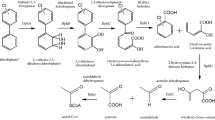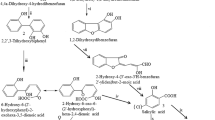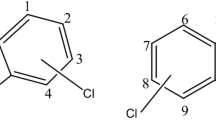Abstract
Polychlorinated dibenzo-p-dioxins (PCDD) and polychlorinated dibenzofurans (PCDF; PCDD/F, dioxins) have not been commercially produced in bulk amounts, as were polychlorinated biphenyls and other haloaromatic organics. Within the past two decades a lot␣of information has accumulated on the biodegradation of PCDD/F and other dioxin-like compounds because of their toxicity and because of significant environmental concern about many congeners of this class of chemicals. PCDD/F are subjected to reductive dehalogenations leading to less halogenated congeners, which can be attacked efficiently by fungal and bacterial oxidases and dioxygenases. In several cases these compounds can be utilized as carbon and energy sources. Pathways for their enzymatic degradation and the organisation of the corresponding degradative genes have been elucidated. Consequently, biotechnological applications will exploit the degradative potential of such microorganisms for bioremediation of contaminated sites.
Similar content being viewed by others
Author information
Authors and Affiliations
Additional information
Received: 29 August 1997 / Received revision: 6 January 1998 / Accepted: 8 January 1998
Rights and permissions
About this article
Cite this article
Wittich, RM. Degradation of dioxin-like compounds by microorganisms. Appl Microbiol Biotechnol 49, 489–499 (1998). https://doi.org/10.1007/s002530051203
Issue Date:
DOI: https://doi.org/10.1007/s002530051203




